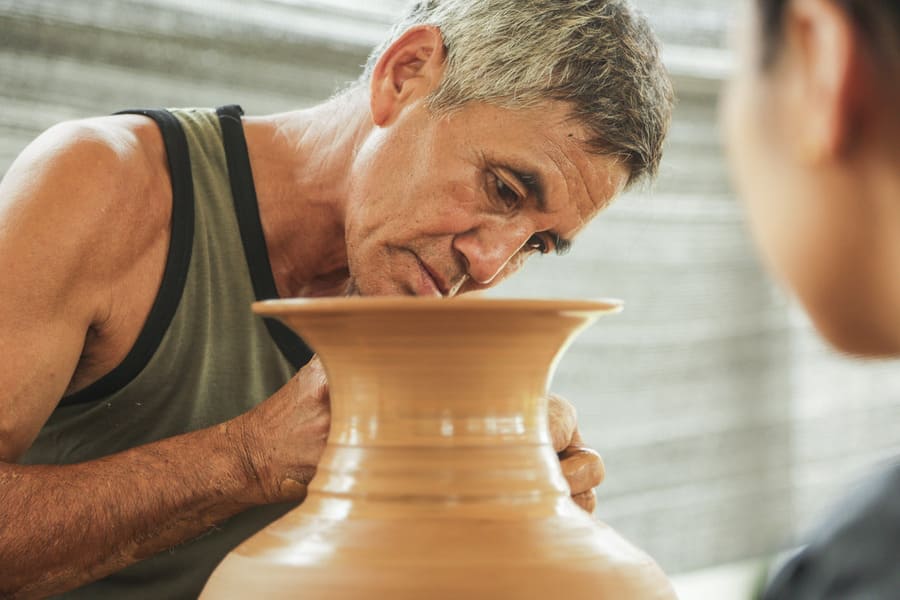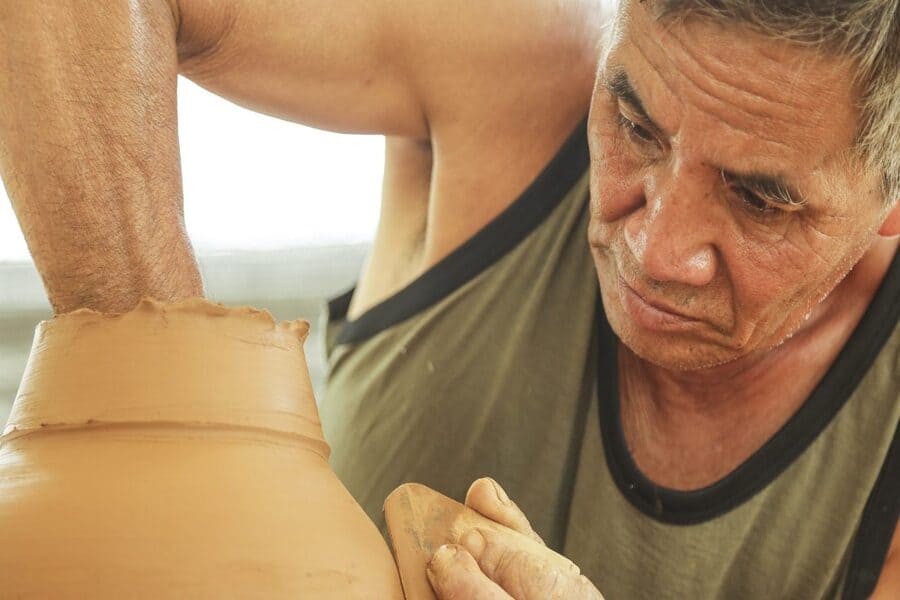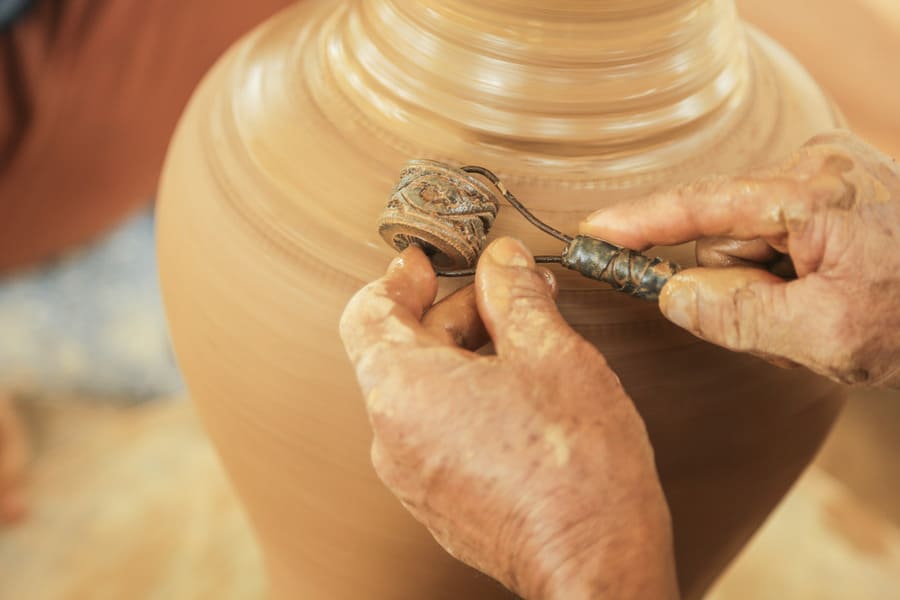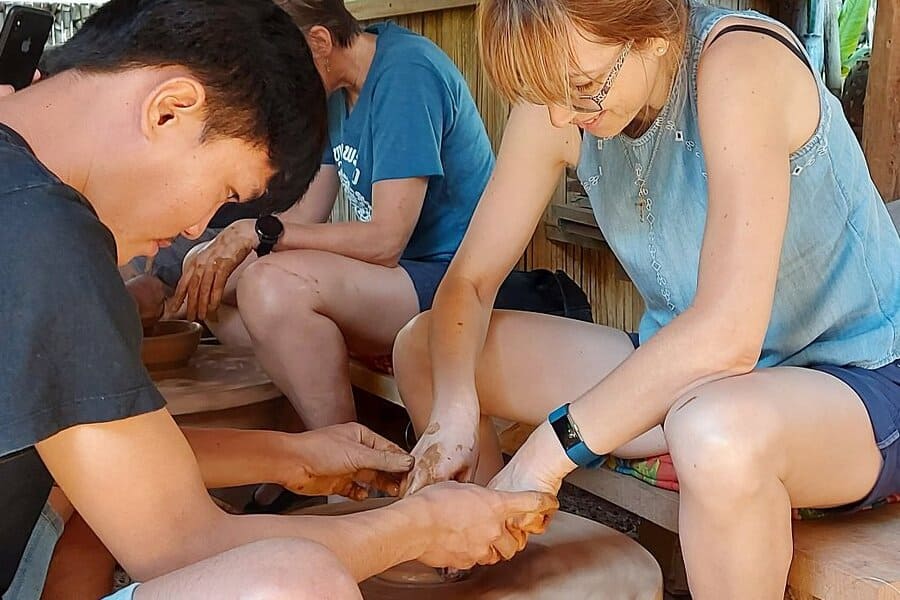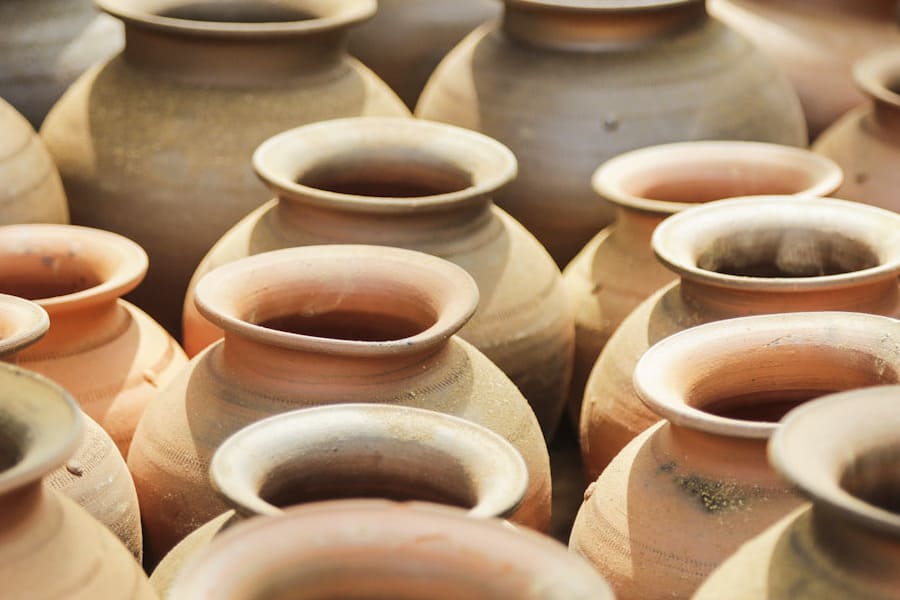Experience the timeless charm of laos tours with a visit to Ban Chan Pottery Village, a hidden gem nestled near the enchanting city of Luang Prabang. This traditional village offers a captivating glimpse into the age-old craft of pottery making, where skilled artisans have honed their techniques for generations.
An Overview Ban Chan Pottery Village
Nestled near the picturesque city of Luang Prabang, Ban Chan Pottery Village beckons travelers with its rich heritage and timeless craftsmanship. This traditional village, nestled along the banks of the Mekong River, is a haven for pottery enthusiasts and cultural explorers alike. Steeped in history, Ban Chan has been shaping clay into exquisite works of art for centuries, with techniques passed down through generations.
As you wander the village's narrow lanes, you'll witness skilled artisans at work, their hands deftly molding raw clay into intricate pottery pieces. From utilitarian vessels to ornamental sculptures, each creation bears the mark of local expertise and artistic flair. Engage with the friendly villagers, learn about their traditional methods, and gain insight into the significance of pottery in Lao culture.
Beyond its artistic appeal, Ban Chan Pottery Village offers a glimpse into the daily life of rural Laos, where time seems to stand still amidst the tranquil rhythms of village existence. Visitors can immerse themselves in the laid-back atmosphere, explore local markets brimming with handcrafted treasures, and savor the warmth of Lao hospitality.
Traditional Pottery-Making Process in Ban Chan Pottery Village
The traditional pottery-making process in Ban Chan Pottery Village, Laos, is a fascinating blend of ancient techniques passed down through generations and artistic innovation. Here's an overview of the traditional pottery-making process in Ban Chan:
Clay Collection and Preparation: The process begins with the collection of clay from nearby riverbanks or clay pits. Artisans carefully select clay with the right texture and quality for pottery-making. The collected clay is then cleaned, refined, and kneaded to remove impurities and create a workable consistency.
Shaping and Forming: Once the clay is prepared, artisans begin shaping and forming it into various pottery forms using traditional techniques. Some artisans prefer hand-building methods, where they use coils or slabs of clay to create vessels, while others may use a potter's wheel for wheel-throwing to achieve symmetrical shapes.
Decoration and Design: After shaping the pottery, artisans add decorative elements and designs to enhance its aesthetic appeal. Traditional motifs and patterns inspired by Lao culture, nature, and spirituality are meticulously carved, painted, or stamped onto the surface of the pottery. Artisans may also apply slip or engobe to create contrasting colors and textures.
Drying: Once decorated, the pottery is left to dry slowly and naturally in the open air. This drying process allows the clay to firm up and stabilize before firing. Careful attention is paid to ensure uniform drying and prevent cracking or warping of the pottery.
Firing: The dried pottery is then fired in traditional wood-fired kilns or open-air pit kilns. Artisans carefully stack the pottery inside the kiln, using layers of fuel such as wood or rice husks to achieve the desired firing temperature. The firing process can take several hours to complete, during which the pottery undergoes chemical changes and vitrification, transforming it into a durable and permanent material.
Finishing Touches: After firing, the pottery is allowed to cool before artisans apply finishing touches such as polishing or glazing. Polishing smooths the surface of the pottery and enhances its sheen, while glazing adds a protective layer and decorative effects. Traditional glazes made from local materials are applied by dipping, brushing, or spraying onto the pottery before a final firing.
Quality Control and Inspection: Before being sold or displayed, the finished pottery undergoes thorough quality control and inspection by skilled artisans. Any imperfections or defects are carefully addressed to ensure that only the highest quality pottery reaches the market.
Activities in Ban Chan Pottery Village
Visiting Ban Chan Pottery Village in Laos offers tourists a range of engaging activities to immerse themselves in the local culture and craftsmanship. Here are some activities you can enjoy during your visit:
- Pottery Workshops:
Participate in hands-on pottery workshops guided by skilled artisans. Learn traditional pottery techniques such as molding, shaping, and decorating clay. Create your own masterpiece under the expert guidance of local potters and take home a unique souvenir of your experience.
- Explore Artisan Workshops:
Wander through the village and explore the numerous pottery workshops and studios. Observe local artisans at work as they demonstrate their craft and create intricate pottery pieces. Gain insight into the traditional methods and tools used in pottery making.
- Shopping for Souvenirs:
Browse the village's pottery shops and galleries to discover a wide array of handmade pottery items. From decorative vases and bowls to functional kitchenware, you'll find a variety of beautifully crafted ceramics to choose from. Support local artisans by purchasing unique souvenirs to take home with you.
- Cultural Exchange:
Engage with the friendly villagers and learn about their way of life. Strike up conversations with local artisans to gain insight into Lao culture, traditions, and customs. Share stories and experiences as you immerse yourself in the warm hospitality of the community.
How to get to Ban Chan PotteryVillage
To reach Ban Chan Pottery Village in Laos, you have a few options depending on your starting point and preferred mode of transportation:
- From Luang Prabang by Tuk-tuk or Taxi:
Ban Chan Pottery Village is located approximately 10-15 kilometers southwest of Luang Prabang. You can hire a tuk-tuk or taxi from the city center to take you there. Negotiate the fare beforehand and expect a scenic journey through rural landscapes along the Mekong River.
- By Bicycle or Motorbike:
For the adventurous traveler, renting a bicycle or motorbike in Luang Prabang is a popular option. The ride to Ban Chan Pottery Village offers a chance to explore the countryside at your own pace, with opportunities to stop and admire the scenery along the way.
- Join a Guided Tour:
Many tour operators in Luang Prabang offer guided tours to Ban Chan Pottery Village as part of their itineraries. This option provides convenience and often includes transportation, allowing you to sit back, relax, and enjoy the experience without worrying about logistics.
Engage with the friendly villagers, learn about their time-honored methods, and even try your hand at shaping clay on a pottery wheel. A journey to Ban Chan Pottery Village promises a unique cultural immersion, where the artistry of the past meets the vibrant spirit of present-day Laos.

